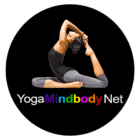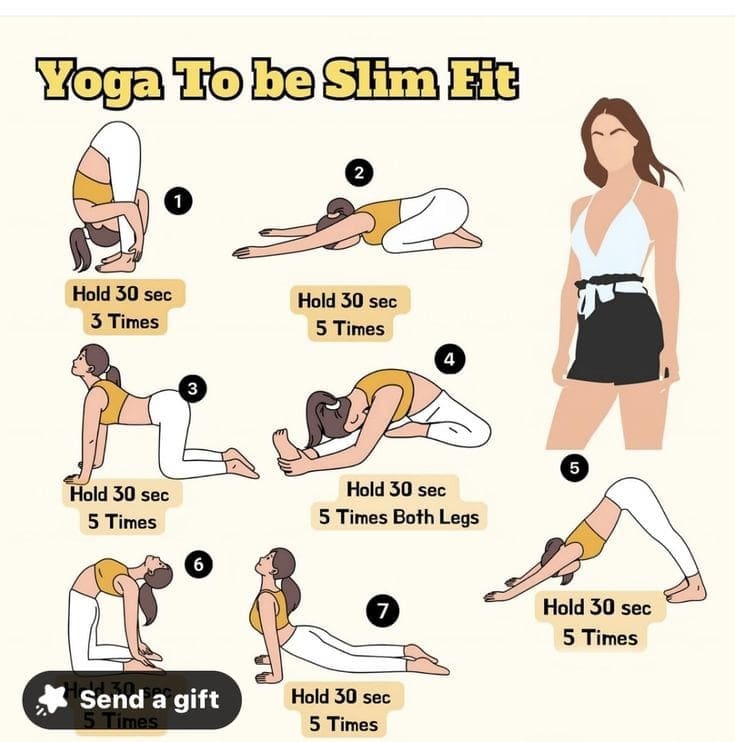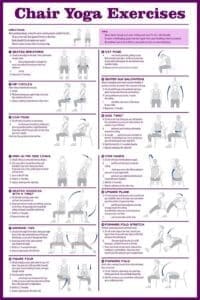Yoga as exercise offers far more than calm stretches—it’s a powerful, full-body workout that strengthens muscles, improves flexibility, and boosts mental clarity. While often seen as a spiritual or meditative practice, yoga can be a transformative addition to your fitness routine.
Understanding Yoga as Exercise
Practicing yoga as exercise involves more than movement—it’s about integrating body, breath, and awareness. Yoga is often misunderstood, but at its core, it is a versatile practice that combines physical postures, breath control, and meditation. By focusing on these elements, yoga can indeed serve as a highly effective workout. Whether you’re a seasoned yogi or a complete beginner, understanding how yoga operates as an exercise form can enhance your practice and fitness regime.
The Physical Aspects of Yoga
When you think about yoga, do you imagine just stretching on a mat? While flexibility is a part of it, the physical aspects of yoga are much broader and incorporate strength, balance, and endurance.
Strength Building
Many yoga poses require you to support your body weight in different ways, which helps build and tone muscle. Postures like Plank, Warrior, and Downward-Facing Dog engage various muscle groups, promoting strength throughout your entire body.
Flexibility and Balance
Flexibility is often the most obvious benefit of yoga. Over time, regular practice can lead to increased range of motion in your joints and muscles. Balance is equally important and is emphasized through balancing poses like Tree Pose or Eagle Pose, which help improve coordination and stability.
Endurance
While yoga may not appear as intense as running or cycling, it does require endurance. Holding postures for extended periods while controlling your breath develops both muscular endurance and mental stamina.
Different Styles of Yoga
Yoga is not a one-size-fits-all practice. There are numerous styles, each emphasizing various components of exercise. Understanding these can help you find the right fit for your fitness goals.
Hatha Yoga
Hatha yoga serves as an excellent introduction to yoga. It involves slower-paced poses and often focuses on basic postures. You’ll develop a foundational understanding of body alignment and breathing, making it ideal if you’re new to physical exercise.
Vinyasa Yoga
Vinyasa yoga, often referred to as “flow” yoga, connects postures in a rhythmic sequence. This style usually involves more movement, making it an excellent cardiovascular workout. You may find yourself sweating while you smoothly transition from one pose to another, boosting your heart rate and endurance.
Ashtanga Yoga
If you’re looking for a challenging workout, Ashtanga yoga might pique your interest. This style consists of a set series of poses performed in a specific order, focusing on strength and flexibility. The dynamic nature correlates closely with cardio workouts, making it a solid choice for those seeking a vigorous exercise regimen.
Power Yoga
Similar in intensity to Ashtanga, Power yoga emphasizes strength and endurance. It mixes traditional yoga with elements of fitness training and often incorporates high-energy sequences. This form is perfect if you want to build a more muscular physique through yoga.
Restorative Yoga
For those needing to unwind, restorative yoga focuses on relaxation and rejuvenation. While it may not offer the same intensity as the other styles, its benefits in terms of stress relief and mental clarity are profound. It’s an essential complement to more vigorous forms of exercise.
Combining Yoga with Other Workouts
Many fitness programs now include yoga as exercise to improve flexibility and reduce injury risk. Integrating yoga into your fitness routine can maximize its benefits. It serves as a perfect complement to more intense cardiovascular or strength-training workouts.
Yoga as a Recovery Tool
After an intense workout, you might find your muscles tight and fatigued. Engaging in a gentle yoga session can help to stretch sore muscles, improve circulation, and relieve tension. This active recovery promotes overall well-being and can significantly enhance your performance in other exercises.
Enhancing Performance
Yoga increases awareness of your body, which can be beneficial for any athletic endeavor. By incorporating yoga into your training, you can improve your balance, flexibility, and strength. Many athletes benefit from yoga as it helps prevent injuries, increases performance, and promotes faster recovery.
Benefits of Yoga as Exercise
Practicing yoga for exercise presents a plethora of benefits. Here are some key advantages that you might find appealing.
Physical Health Benefits
Yoga can contribute to improved cardiovascular health. Through deep breathing and timely movement, you can enhance lung capacity and improve circulation. It also supports joint health due to its low-impact nature, making it suitable for all ages.
Mental Health Benefits
Practicing yoga can reduce stress and anxiety levels through meditative breathing and mindfulness. It promotes a sense of calm and serenity, allowing you to better handle everyday pressures.
Holistic Approach
Yoga presents a holistic approach to health. While it strengthens and tones your muscles, it simultaneously nurtures your mental and emotional states. It can lead to improved self-esteem and overall satisfaction in life.
How to Begin Your Yoga Journey
If you’re considering starting yoga as exercise, the first step is finding the right style and setting realistic goals. If you’re eager to incorporate yoga into your exercise routine, starting on the right foot is essential. Here are some tips to help you get started.
Choosing the Right Class
Selecting the right class is crucial. Consider your current fitness level, interests, and goals when choosing a style. Many local studios offer beginner classes, or you can find online sessions that suit your needs.
Required Equipment
You don’t need much to start practicing yoga. A yoga mat is essential for comfort, and you may want supportive blocks and straps to assist you in various poses. Be sure to wear comfortable clothing that allows you to move freely.
Setting Realistic Goals
As with any fitness journey, it’s important to set achievable goals. Start with short sessions, gradually increasing your practice duration as you become more comfortable. Celebrate your progress, no matter how small.
Building a Sustainable Yoga Practice
Creating a consistent yoga routine can be rewarding. Here’s how you can maintain your practice successfully.
Schedule Regular Sessions
Consistency is key. Try to practice yoga at least two to three times a week. Whether it’s in the early morning or after a long day, find a time that works best for you.
Listen to Your Body
Your body communicates its needs, and it’s essential to pay attention. If a pose doesn’t feel right, don’t hesitate to modify or skip it. Yoga is about progression, not perfection.
Maintain an Open Mind
Be open to exploring different styles and instructors. What works for someone else might not resonate with you. Keep experimenting until you find your preferred approach.
Yoga and Lifestyle Integration
To reap the full benefits of yoga, consider integrating its principles into your daily life.
Mindful Living
Yoga is as much about the mind as it is about the body. Practice mindfulness through meditation or simply by being fully present in your daily activities. This can lead to enhanced emotional wellbeing and improved focus.
Nutrition and Hydration
Complement your yoga practice with a balanced diet and proper hydration. Consuming nutritious foods boosts your energy levels and supports your body during workouts.
Community Engagement
Joining a yoga community can provide motivation and encouragement. Attend local workshops, join online forums, or participate in group classes. Engaging with fellow yogis fosters a supportive environment that can enhance your practice.
The Connection Between Yoga and Overall Well-Being
Practicing yoga as exercise goes beyond physical fitness. It intertwines physical activity with mental and emotional health, creating a more rounded sense of well-being.
Building Resilience
The focus on breath and movement in yoga cultivates resilience. You learn to push through discomfort on the mat, which translates into your everyday life. This resilience allows you to handle life’s challenges more effectively.
Enhancing Self-Awareness
Yoga promotes a deeper understanding of your body and emotions. You become more attuned to your thoughts and behaviors, facilitating personal growth. This awareness can lead to more intentional living and improved relationships.
Encouraging Balance
Incorporating yoga into your life can help you achieve balance. It enables you to juggle responsibilities while maintaining a healthy lifestyle. The practice teaches you to slow down and appreciate each moment, promoting overall happiness.
Conclusion: Embracing Yoga as Exercise
If you’re looking to enhance your fitness regime or simply find a new way to move your body, yoga offers a multifaceted approach. With its various styles, benefits, and potential for integration into daily life, it’s an exercise modality that nurtures both your body and mind. Whether you’re new or experienced, embracing yoga as exercise can elevate your overall well-being.
So, why not roll out your mat and start your journey today? The possibilities within yoga are endless, and every session can lead to new discoveries about yourself. Whether you aim to build strength, improve flexibility, or cultivate a sense of peace, embracing yoga as exercise might just be the perfect choice for you.
Disclaimer
The content is purely informative and educational in nature and should not be construed as medical advice. Please use the content only in consultation with an appropriate certified medical or healthcare professional


